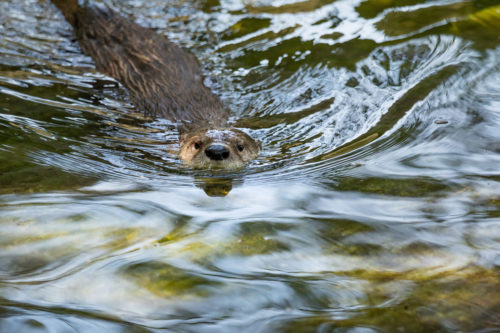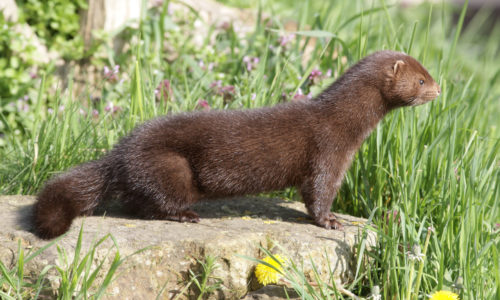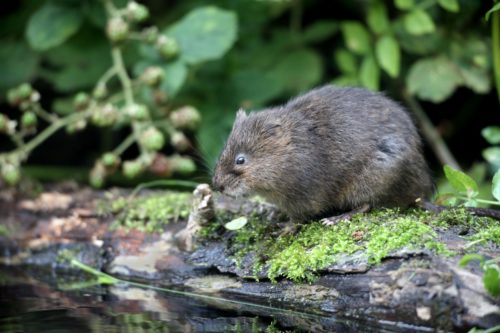You may be surprised that large maritime mammals are sometimes seen in the river. As the Wye nears the Severn Estuary it becomes tidal and increasingly maritime, especially noticeable from Bigsweir (the tidal limit) downstream. The Wye at Chepstow has the world’s 3rd highest tidal rise and fall of 44 feet, so it’s not surprising that the odd dolphin, porpoise or seal finds its way into the river from time to time. Here’s some amazing footage of a dolphin at Chepstow, captured by Richard Morgan of the Black Rock lave net fishery.
A ‘puffing pig’ or harbor porpoise is another occasional visitor to the tidal stretch of the river, with one spotted at Lancaut, just above Chepstow, during 2017.
An adult grey seal was photographed way inland at Symonds Yat in 2014. Nicknamed ‘Keith’, the seal spent several weeks in the river at Monmouth during winter high flood waters. Seals are not uncommon in the tidal muddy waters of the Wye at Chepstow. This one was filmed in 2018 by local restaurant Panevino – click to view.
Pesticide poisoning, hunting and habitat destruction nearly wiped the otter out during the 20th century. With harmful pesticides banned, the Wye is cleaner, and conservation projects have helped to save their habitats. The Wye now supports a good population of otters, although because they are largely nocturnal you may find it hard to spot one! They feed on fish, waterbirds, amphibians and crustaceans and are especially fond of eels. They have their cubs in underground burrows called a ‘holt’.


It’s more likely you will see a mink than an otter and they are often mistaken for otters, although they are much smaller. Mink have dark brown fur and a distinctive white chin and lower jaw. Historically American mink were sought after to make fur clothing and many mink fur farms were set up in the UK. During the 1950s mink escaped from these farms and became established in the wild. They are an invasive and non-native predator which kill much of our native wildlife including water voles.


Once common, the water vole is Britain’s fastest declining wild mammal, threatened by American mink and habitat loss. They live in burrows on the riverbank and you can see signs that they are around if there is a ‘lawn’ of nibbled grass in front of the burrow with 45 degree cut ends. Their droppings are easy to recognise as they are cigar shaped.
The AONB has been involved in the ‘Water voles on the Wye’, project, working to expand the range and extent of water voles on the Rivers Wye and Monnow, through mink control and habitat management.
Keep your eyes peeled and who knows what you will see!

